How to get to Bursa
From Istanbul Ataturk Airport to Istanbul Ferryport (Yenikapi)
We strongly advise to arrive at Ataturk Airport.
Upon arrival to Istanbul Ataturk Airport , you have two options:
Taxi: You can take a taxi to Yenikapi Ferry Port which takes about 25 minutes and the taxi fare costs approximately 15 Euro.
Bus: Within the airport vicinity there are bus stops. Take bus Number 96T (see the map below) to Yenikapi (Ferry Port). The bus takes approximately 37 minutes.
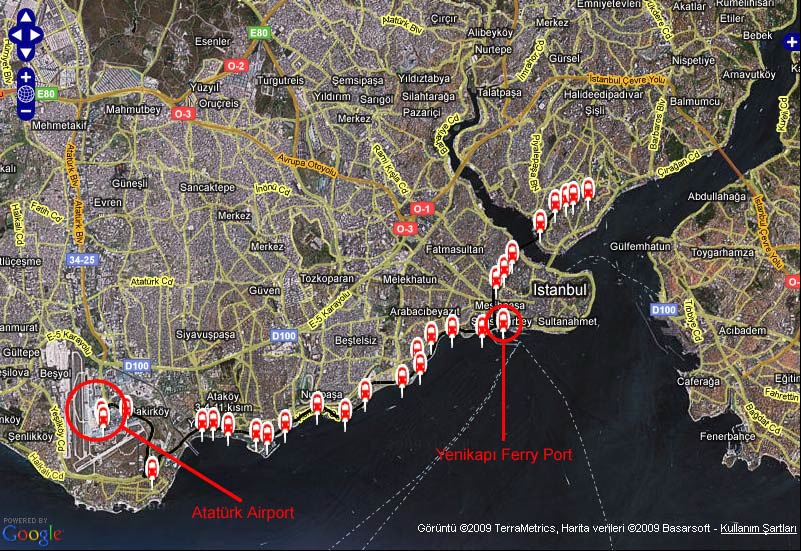
The ferry ticket (20 TL) can be purchased at the ferry port. It is also possible to book or buy your ticket online through the following address:
https://online.ido.com.tr/irj/portal
You have to choose the inter-city lines and select Yenikapi at departure and Bursa at the arrival boxes (see the map below).
For those who have purchased tickets online alredy, here is how to proceed:
Upon arrival at the ferryport find the automats and slip your credit card, then the machine will give you the ticket.
If you will buy the ticket from the ferryport, please make sure to buy you ticket 2 hours prior departure.
P.S: Only Turkish Lira is accepted and you will find the queue in front of the counters.
In November there are 2 ferries available from Yenikapi to Bursa daily (7:30 am and 5:30 pm). The voyage takes 90 minutes from Yenikapi ferry Port / Istanbul to Guzelyali Ferry Port / Bursa.
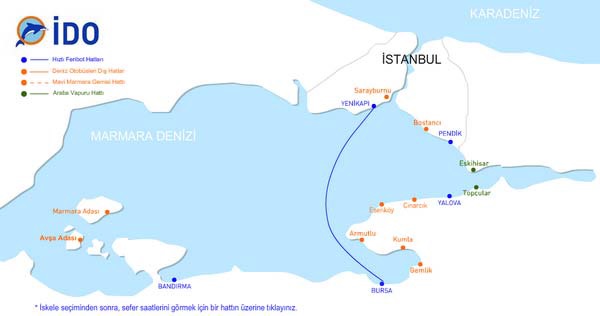
From the Ferry Port:
There will be organised pich-up services taking participants to the Hotel. Watch for AUDEM tags and Uludag University logos.
If by any chance you miss the organized pick-ups, here is how to get to the Hotel:
At Güzelyalı Ferry Port take bus no 1/GY to Organize Sanayi. After getting off at Organize Sanayi, take bus no B24 to Uludağ University Campus.
By Bus:
Located within Istanbul Atatürk Airport a rail service runs to and from the Atatürk Airport Railway Station, follow the Metro signs and take the metro to “Esenler Bus Station” (see the map below). At Esenler Bus Station, find one of the two following bus company offices: Kamil Koc or Nilufer. Price of bus ticket is 18 – 20 TL. The bus ride to Bursa takes approximately 3.5 hrs. At Bursa Bus Terminal there is a bus station. The university is serviced by bus no 93 that travels from Bursa Bus Station to Uludag University Campus. The bus ride to the campus takes approximately 50 minutes.
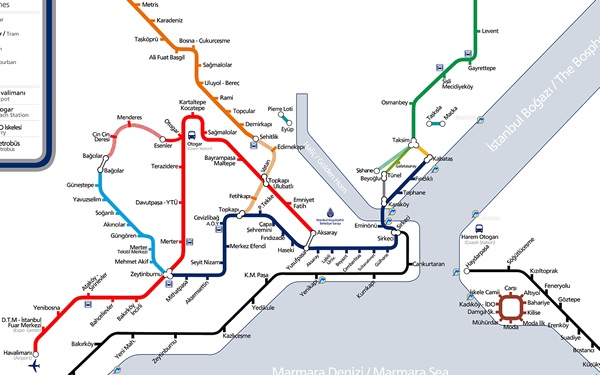
Bursa City Tour
Some places are:
- Complexes, consisting of a mosque, tomb of the sultan and his family, soup house where meal was served to the poor for free and a bath which were built by the order of Sultans during the period of when Bursa was the capital city of the Ottomans before IStanbul was conquered by Fatih Sultan Mehmet.
- Mosques other than the ones within the complexes, the most visited museums of the city and an ancient bridge.
- A 700 years old Orroman village
- A culture which is a new project
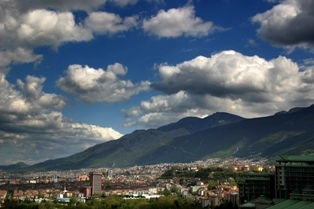
Below, you can find a brief information about the places that can be visited.
Bursa City Museum
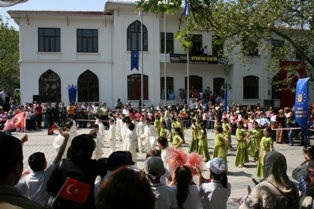
Bursa City Museum tells the 7000 year of history of Bursa city. At this wide range of historical spectrum, historical, geographical, commercial, social, economic and cultural values of Bursa are brought out through using a systematic way. The Museum was opened on 14 February 2004. At each floor of the three-storeyed Museum, a different type of an expression style is perceived. At the entrance floor, chronological way of expression and at the lower floor and the upper floor, thematic way of expression can be observed. City Museum organizes "Street Games Festival" every year in the garden of the Museum in April.
The Bursa City Museum was nominated by the panel of judges and is commended for "noteworthy contribution to public quality".
www.bursakentmuzesi.gov.tr
Karagöz Museum
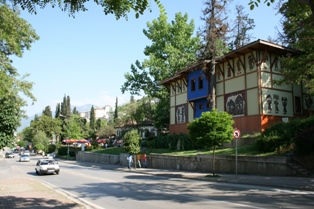
In order to carry Karagöz-Hacivat Shadow Theatre art and craft that has been identified with Bursa, to the international platform, The Karagöz Museum was restored by Bursa Metropolitan Municipality and opened in February 2007.
There are regular courses for Karagöz figure making and Karagöz Shadow Theatre shows for schools and tourists.
The collections of the museum are the figures of all the Karagöz Shadow play characters, music enstruments that are played during the show, puppets that are left to the museum by the foreign puppet companies at the "International Karagöz Puppet and Shadow Theatre Festival", newspapers about Karagöz from the Ottoman period and books on Karagöz.
Ulucami
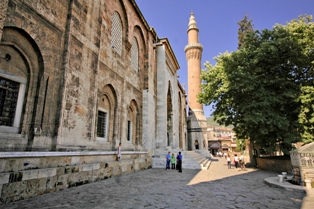
The Mosque was built by Sultan Yıldırım Bayezid in 1400 in the center of the city. It consists of 20 domes on twelve columns. The walls and the columns are decorated with the verse of Kur’an written with special style of Ottoman calligraphy, in Turkish called "Hat". It is located nearby the Forum Venue, within the district of Hans.
Uluumat Traditional Ottoman Costumes and Jewelries Museum
The Museum was opened in the Madrasah of Uakir Ahmet Pasha in September 2004. 79 pieces of traditional Ottoman costumes from all around Turkey and 400 pieces of ethnographic jewelry are exhibited in the Museum. It is a unique collection in Turkey by means of number and quality.
Muradiye Complex
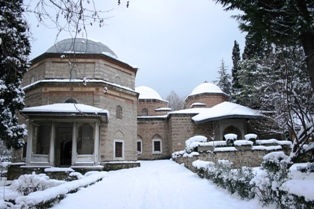
Muradiye complex was built by Sultan II. Murat in 1425. It is the last complex built in Bursa by Ottoman Sultans. The complex consists of a madrasah, a mosque, a bath, a hospital and tombs. This is the place where you can experience the feelings of life and death, dreams and reality, sorrow and peace at the same time.
Museum Of Turkish And Islamic Arts
The Museum was established within the Madrasah of Yesil, which was constructed between 1414-1424. As the original characteristic of Madrasah, inside is decorated with mosaic tile and colored gloss. In the museum, pieces from Turkish and Islamic Arts which belong to the period a.d 10th century to 20th century and the coins used from the beginning of 7th century a.d until early 20th century. Examples of grave stones and stone epigraphs can be seen in the garden of the museum.
Orhan Cami
The Mosque and the complex of madrasah, bath and the caransaray was built by Sultan Orhan to enlarge the city in the years of 1339/40. It was outside the city walls at the time it was built. It is located nearby the Forum Venue.
Yesil (Green) Complex
The complex consists of Yesil Mosque, Yesil Tomb and Yesil Madrasah. It built in 1491 with the order of Çelebi Sultan Mehmet. Yesil Tomb is accepted as one of the symbols of the city.
Irgandi Bridge
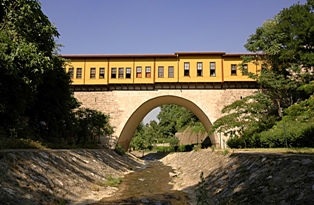
t was built on the ancient Silk Road in 1442 by Pir Ali. After the earthquake in 1855 it was damaged seriously and restored in 1940. It is one of the four bridges in the World which has a bazaar on two sides.
Kozahan (Koza Inn)
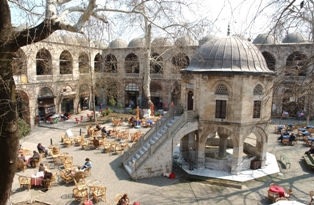
It was built by the order of II. Sultan Bayezid in 1490/92. It was one of the cocoon trade center through history. Now silk clothes and fabrics can be bought at the shops and one can enjoy a cup of Turkish coffee in the garden of the Inn. It is located nearby the Forum Venue.
Covered Market
It was built at the end of the 14th century with one hundred shops. Its is located in the center of the city among Emir Inn, Koza Inn and Geyve Inn nearby the Forum Venue. Through time, many other shops have specialized on herb and spice, puff making and selling, chest making and selling, goldsmithery, yarn selling and copper work. It is the second biggest covered bazaar in Turkey after the one in Istanbul.
Merinos Culture Center
Merinos was a wool production factory opened by the order of Turkis Republic's founder Mustafa Kemal Atatürk. The land of the factory will now be a culture center, which is one of the new projects of the Bursa Metropolitan Municipality. The 270.000m2 area will consist of Energy Museum, Textile Museum, Bursa Sports History Museum, 210.000m2 park, culture and congress center with a higher capacity then the existing ones, cafes and restaurants where local cuisine will be served.
Cumalikizik
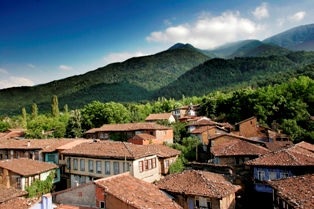
Cumalikizik is the 700 years old Ottoman Village, located on the eastern part of Bursa. The houses of the village are the most important samples of Ottoman rural architecture. The village is famous for its fresh fruits, fruit jams and local noodles.
Emir Sultan Complex
It was built by the order of Ottoman Sultan Yildirim Bayezid’s daughter in the name of her husband Emir Sultan in the beginning of the 15th century. Among the mosques in Bursa, Emir Sultan Mosque has the largest dome and courtyard.
About Turkey
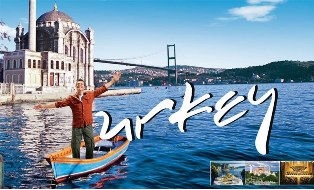
Turkey is Bordered by eight coutries: Bulgaria to the northwest, Greece to the west, Georgia to the northeast, America, Azerbijan (the exclave of Nakhichevan) and Iran to the east, and IRaq and Syria to the southeast. The Mediterranean Sea and Cyprus are to the south, the Aegean Sea and Archipelago are to the west, and the Black Sea is to the north.
Separating Anatolia and Thrace are the Sea of Marmara and the Turkish Straits (the Bosporus and the Dardanelles), which are commonly reckoned to delineate the border between Asia and Europe, Turkey's culture has a unique blend of Eastern and Western tradition.
Capital City: Ankara
Largest City: Istanbul
Official Language: Turkish
Government: Parliamentary Republic
Area Total: 783, 562 Km2
Population: 2008 estimate 71, 892, 808
Population Density: 93/Km2
For more information about Turkey, please visit: www.goturkey.com.
About Bursa
Bursa is
- City of history and empires: Bithynia, Roman, Seljuk, Byzantine and first Capital of Ottoman Empire;
- Global city with: 1991 Europe Prize and it's 20 Partner Cities;
- City of festivals: folk dances, theatre, movie, music, literature, photograph;
- Textile city: on the Ancient Silk Road;
- City of industry and trade: 4th biggest industry of Turkey;
- City of nature and agriculture: referres as " Green Bursa" in many sources due to its rich flora;
- City of thermal water with the 5 star hotels;
- City of moutain and sea at the slopes of Mt. Uludaǧ a center of winter and summer sports;
- City of Education: Uludaǧ University;
- City of unique cuisine: Ottoman dishes, İskender Kebab, chestnut candy;
- City of museums like an "Open Air Museum";
- City of tourism: Everyone has a reason to come to Bursa...
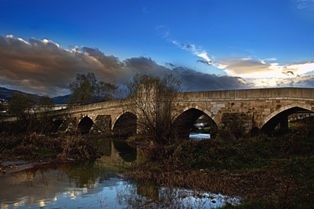
The Silk City of Civilization

Bursa is located in the Marmara Region and 3 hours drive from Istanbul. Bursa is the 4th biggest city of the Turkish Republic in terms of its economy and population of over 2.500.000 citizens. The city is frequently cited as "Yeşil Bursa" )meaning "Green Bursa") in a reference to the parks and gardens located across its urban tissue, as well as to the vast forests in rich variety that extend in its surrounding region. It has a typical Marmara climate: hot summers with some rain and mild to cool winters. Bursa was awarded with "The European City Prized" by European Council in 1991.
The historical and touristic places that will be visited in Bursa during the Forum can be found under the "Tours" topic of our website.
Population: 2008 estimate 2.562.828
Area Total: 11.043 Km2
Population Density: 71/Km2
Elevation: 100 m
Time zone: UTC+2, Summer UTC+3
Journey to 5000 Years of History
Legend of Bursa
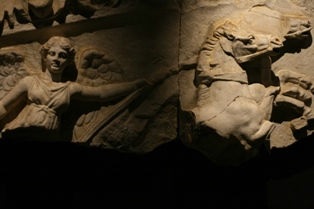
According to the legend, a shepherd was exiled to an unknown place because the animals he herded entered the emperor's the emperor's garden. After a while, the shepherd was very happy about the punishment he was given. Because the place he was exiled to was a very green place, covered with forests. It had plenty of water, hunting grounds and meadows. The vapor arising from the boiling water here and there gave the lovely place a dreamlike appearance. A grand moutain that rose right there, nearly, crowned all this beauty with its celestial grandeur. The shepherd led a very confortable life in abundance in this place of exile. Others followed him and the village that was formed in this beautiful place expanded in time and became a big city. According to mythology, the village that the shepherd founded was the village of Tahtali, which is immediately to the west of today's Bursa.
History of Bursa in Brief
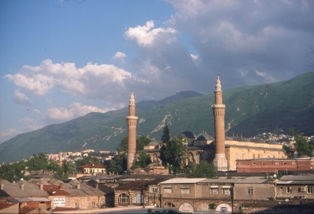
The oldest written information about Bursa and its environs is from herodots' scripts dating 5th century BC. but the ruins and mounds that are found in Bursa and its surroundings indicate that the city is an important site civilization for at least 5000 years.
The region of Bursa was under the rule of various colonies and countries until the State of Bithynia was founded in the 4th century B.C. The city was founded by Bithynian King I. Prusias in 232-192 BC.
Bursa was also a city of Roman, Seljuk and Byzantine Empire until the conquest of Sultan Orhan in 1326 and then it became th first capital city of the Ottoman Empire. It is understood through the historic records that Bursa expanded after the Roman period. Especially during the Byzantine rule, in the time of Emperor Justinian I (527-565): bazaars, hammams, statues and a palace were built.
It is seen that the Turks came to Bursa for the first time during the Seljuk period. İznik, which is today a district of Bursa, was the capital of the Seljuk Empire from 1081 to 1097. As the Latin Government was founded in Istanbul, this time, İznik, where the 1. and 7. Christian Councils were held, continued to exist as the capital of the Byzantine Empire until 1261. In the meantime, the Byzantine princes cooperated with the Latins against the Muslims and have continud their hegemony in Bursa.
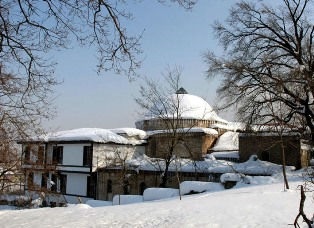
Bursa had been the capital of the Ottoman State for 76 years starting from its conquest in 1326, until 1402. After the conquest of Istanbul in 1453, Bursa had started to be governed as a "Flag Principality" under the Chief Principality of Anatolia. Bursa was named as "Country of Hüdâvendigar" after Istanbul became the capital and it gained the status of a "province" in 1864. Bursa started to be governed by governors in 1867.
After Turkey was defeated by the Allied Powers in world War I, Bursa was invaded by the Greek militarry forces. It was saved by the armies of the Parliament of Turkey on September 11th, 1922.
When the Republic was founded with the leadership of Atatürk, Bursa became one of the pioneed cities of modern Turkey.